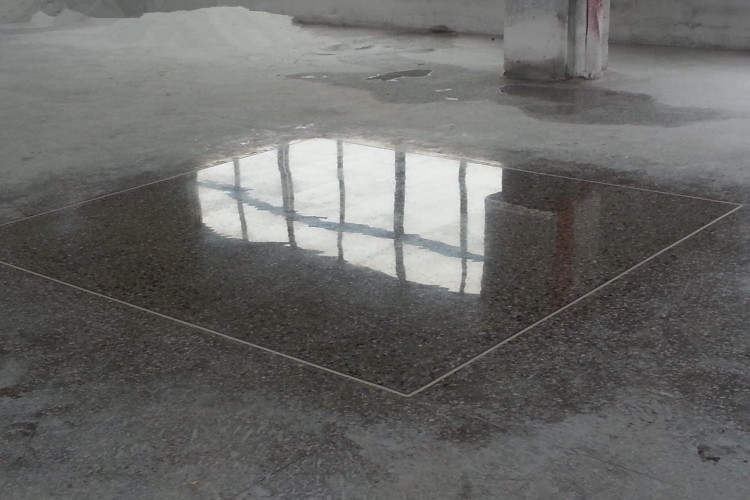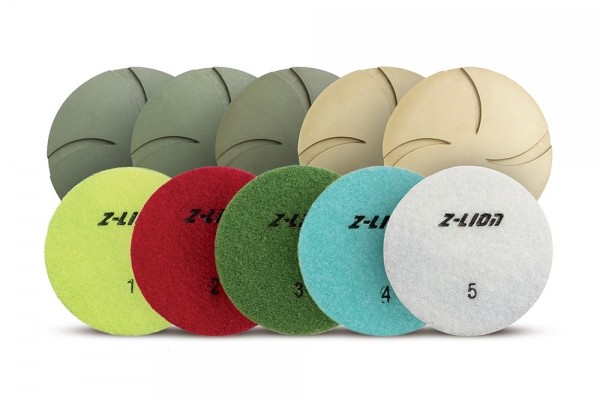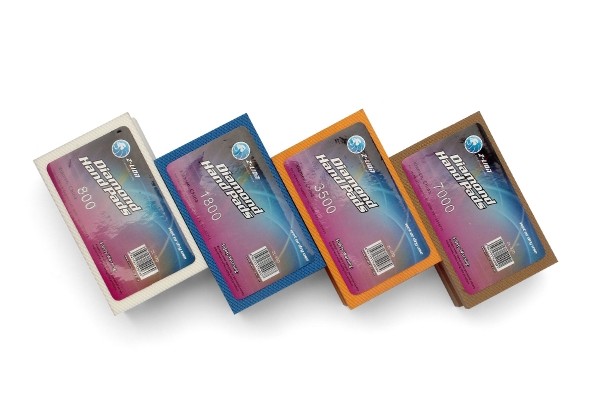Common Problems and Solutions for Stone Grinding
Stone grinding is a critical process in achieving the surface finish and quality required for a variety of stone materials. However, there are some common problems that can arise during the stone grinding process, affecting the final aesthetics and overall effect. Here we will explore the problem in stone grinding and provide solutions.

Over grinding
Excessive use of stone grinding discs can cause over-grinding, causing excessive wear on the stone surface. This can result in a black or white appearance that affects the overall beauty of the stone surface. In the pursuit of perfect results, operators may inadvertently overuse the grinding discs, resulting in undesirable results.

Solution:
1. Evaluate the polishing effect and select the appropriate grinding disc
Before starting the grinding process, it is crucial to accurately assess the desired polish on your stone surface. Depending on the specific needs and desired finish, the appropriate stone grinding disc should be selected. Different types of stone and surface characteristics may require different levels of abrasives and grit. By carefully evaluating polishing results and selecting the appropriate grinding disc, operators can avoid overgrinding and achieve the desired surface finish.
2. Monitor the number of times the grinding disc is used and the rotation speed of the grinding head
To prevent over-grinding, attention must be paid to the number of times the grinding disc is used and the rotational speed of the grinding head. Excessive use of abrasive discs can cause unnecessary wear and tear on the surface of the stone, damaging its appearance. By monitoring the number and speed of grinding head uses, operators can prevent excessive wear and ensure the grinding process is optimized for specific stone and finish requirements.
Scratches
During the grinding process, scratches may appear on the surface of the stone, detracting from its overall appearance. This problem is usually caused by using the wrong grinding disc or the operator lacking the skills to perform the grinding process.
Solution:
1. Comprehensively understand the quality and wear resistance of grinding discs
Before starting the grinding process, it is crucial to fully understand the quality and wear resistance of the grinding disc. Different types of stone and surface properties may require specific grinding discs with varying degrees of abrasiveness and durability. By selecting a grinding disc suited to specific stone and finish requirements, operators can minimize the risk of scratches and ensure high-quality grinding results.
2. Choose the appropriate grinding wheel head and hone your operating skills
Choosing the right grinding wheel head is crucial to getting the best results and preventing scratches on your stone surface. The selection of the grinding wheel head should be consistent with the specific characteristics of the stone and the desired finish. In addition, operators should improve their operating skills to ensure that the grinding process is performed accurately and carefully. By mastering the correct techniques and methods, operators can minimize the risk of scratches and achieve superior grinding results.
3. Use special polishing tools for local repairs
If scratches are found on the surface of the stone, the operator can use special polishing tools to perform local repairs. These tools are designed to address local imperfections and scratches, restoring surfaces to their intended finish. By using specialized polishing tools for restoration, operators can correct any imperfections and maintain the overall quality of the stone surface.

Stone Grinding Disc Falling
The occurrence of grinding discs falling during stone grinding is a common problem that disrupts the grinding process. Repeated falling of the grinding disc will reduce work efficiency, increase work intensity, and lead to delays and safety hazards.
Solution:
1. Check the quality and durability of the grinding disc
Before starting the grinding process, the quality and durability of the grinding disc must be thoroughly checked. The grinding disc plays a vital role in the grinding process, and its stability and durability are essential to prevent the grinding disc from falling. By choosing a high-quality, durable grinding disc, operators can minimize the risk of the grinding disc falling, ensuring smooth and efficient grinding operations.
2. Choose the appropriate grinding disc
Choosing the right grinding disc is critical to preventing the grinding wheel from falling off. The selection of the grinding disc should be consistent with the specific characteristics of the stone and the desired finish. By ensuring that the grinding wheel head is suitable for specific grinding requirements, operators can minimize the risk of a dropped grinding disc and maintain operational efficiency.
3. Monitor the wear of the grinding disc and replace it in time
During the grinding process, pay close attention to the wear of the grinding disc. Regularly monitoring the condition of the grinding disc is critical to identifying signs of wear and potential problems that could cause the grinding disc to fall off. If wear or damage is found, the grinding head should be replaced in time to avoid the grinding disc falling and maintain safe and efficient grinding operations.
Stone Color is Uneven
During the stone polishing process, improper operating techniques and uneven polishing will lead to uneven color on the surface of the stone. This problem can affect the overall appearance and quality of the finished stone, affecting its aesthetic appeal and visual consistency.
Solution:
1. Familiar with stone materials and characteristics
Before starting the grinding process, it is crucial to have a thorough understanding of the material and properties of the stone being worked on. Different types of stone have unique properties and characteristics that affect the grinding process and final color. By becoming familiar with a specific stone, operators can make informed decisions about the grinding process and select appropriate tools and techniques.
2. Select the appropriate grinding wheel and grinding wheel speed
Choosing the right grinding wheel and wheel speed is critical to achieving a consistent and even color on the stone surface. The selection of the grinding wheel should be consistent with the specific characteristics of the stone and the desired finish. Additionally, adjusting the grinding wheel speed based on the specific needs of the stone can help achieve more even and consistent grinding results.
3. Pay attention to the operating intensity and the uniformity of the bottom grinding
During the grinding process, close attention should be paid to the operating intensity and the uniformity of the grinding bottom. Consistent and controlled operating force and an even grinding base are essential to prevent uneven color on the stone surface. By ensuring that the grinding process is performed with precision and care, operators can minimize the risk of color unevenness and achieve a high-quality and visually consistent finish.
Summary: Stone grinding is one of the most important processes in stone processing, but some common problems may occur during the operation. This article provides solutions to these problems. Doing a good job in the operation and following the correct operation process can effectively improve the efficiency and quality of the stone grinding process and ensure that the final output of the stone can achieve the expected effect.
 English
English  Português
Português  русский
русский  Chinese
Chinese  French
French  Japanese
Japanese  Spanish
Spanish 



